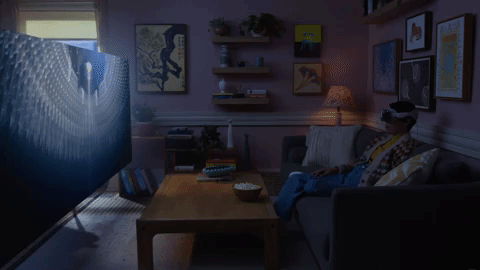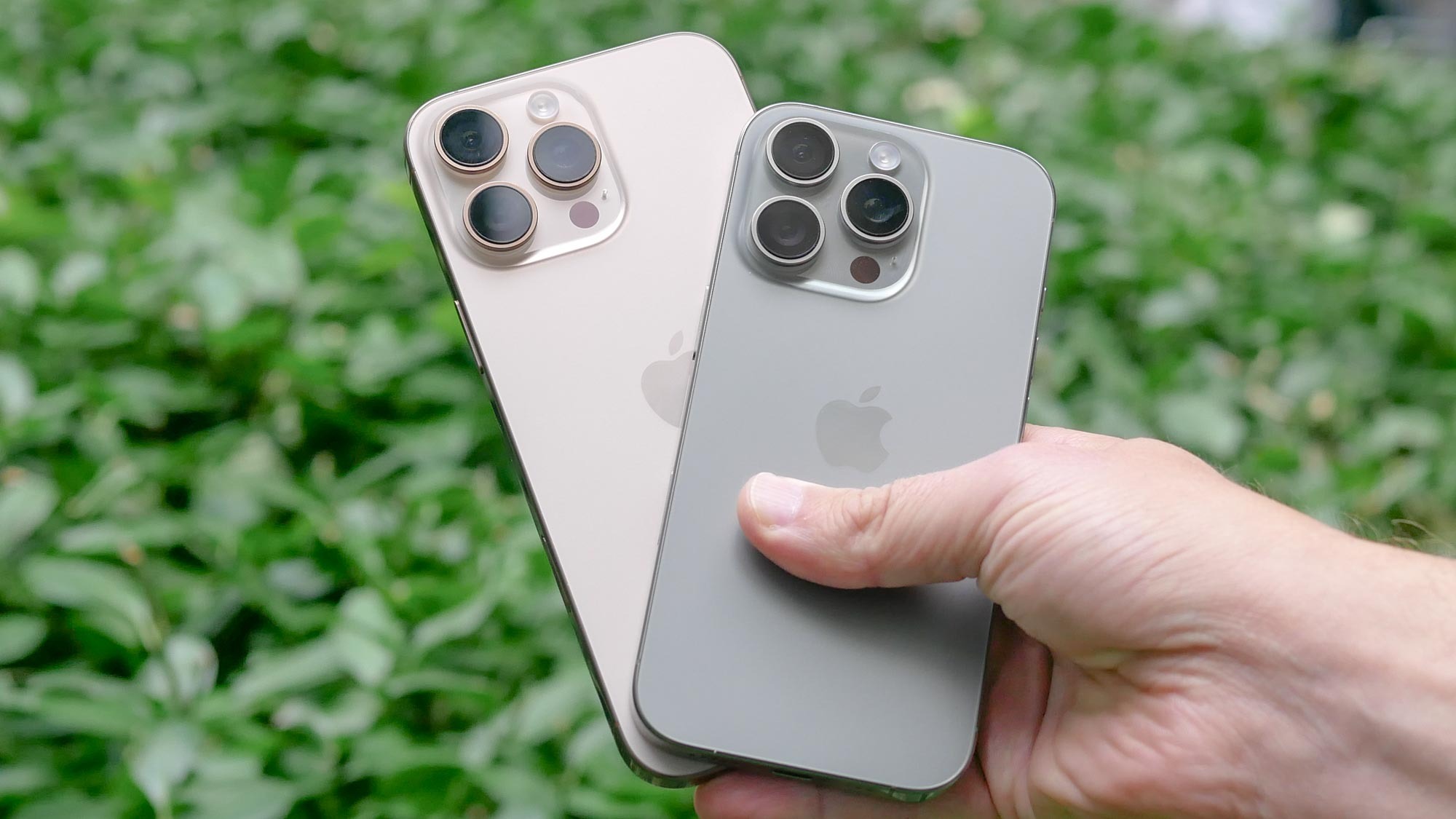The Apple Vision Pro is the official start of the post-iPhone era
This new spatial computer proves Tim Cook’s Apple can innovate

For years many Apple watchers have complained that the company doesn’t innovate anymore, that it has just been riding the coattails of Steve Jobs’ iPhone. Yes, the Apple Watch launched under CEO Tim Cook, but its development started under Steve Jobs and was later refined by the Cook-led Apple.
So here we are as Apple unveils an entirely new product category for the first time in nearly a decade — and arguably the biggest innovation since the original iPhone —and there’s a wave of negativity around the Apple Vision Pro.
There’s some serious irony in that backlash, but the skepticism is understandable, especially since the new Vision Pro starts at $3,499. That’s $500 more than the already high price some had predicted and it’s $2,500 more than the Meta Quest Pro, though to be fair Meta's headset started at $1,500 before a price cut. But as someone who has tried the Vision Pro, I think it's important to take a step back for a moment and think about what Apple has accomplished here.
While the Vision Pro certainly borrows a lot from the iPhone, this is a breakthrough that that both leverages recent innovations (like Apple silicon) and feels like a completely new device that officially kicks off the post-iPhone era.
Vision Pro: meet spatial computing

There’s a reason why Apple is calling the Vision Pro a spatial computer as opposed to a VR headset or mixed reality headset. It’s not just about being passive and watching stuff around you. Spatial computing implies something active, and there’s plenty of things you can do with this wearable device.
"The Apple Vision Pro is the most impressive piece of technology I've ever seen," said Ben Bajarin, CEO and principal analyst for Creative Strategies. "So many Apple innovations that came before are evident in this product. From all their work in custom silicon, miniaturization, sensor fusion, camera sensors, custom sensors, all the things they learned in other products manifest in AVP to create the experience they did."
The Apple Vision Pro is the most impressive piece of technology I've ever seen.
Ben Bajarin, Creative Strategies
When I tried the Vision Pro, I realized this thing puts even the best ultra-wide monitors to shame. I loved how easy it was to move around apps with a gesture and pin them wherever I like. So you could have your browser in the middle of your spatial computing canvas, a Messages app off to the left, a music player on the right and maybe calendar and reminders in the corners or maybe just out of view.
The Apple Vision Pro also has a lot of potential for collaboration, which I discovered during a FaceTime call demo during my Vision Pro hands-on. I was impressed how crisp Apple’s Freeform app looked in augmented reality, complete with a 3D model I could manipulate.
The other caller was using the Vision Pro, too, which is why I saw his Digital Persona, an animated 3D version of their head that spoke to me. It looked like the person I knew, though more like the video game version than the real deal. But the potential here is pretty great.
Eye tracking is way better than multi-touch

Another area of serious innovation is the interface on the Vision Pro. I’ve tried eye tracking before on gaming laptops, but I’ve never seen something this precise. After a brief setup session that involved following dots around my virtual space, I was amazed with how well the Vision Pro tracked my eye movements. As I looked around the main menu, the various icons lit up, ready for me to select something just by pressing my fingers together.
"The overall user experience, especially the eye-tracking and finger-gesture interface, is simply unmatched," said Avi Greengart, founder of Techsponential, who also received a Vision Pro demo. "Apple is setting the baseline expectation for spatial computing very high."

While the UI is iPhone-like, you don’t reach out and touch anything, as Apple knows your arms would get tired after a while. It’s also why you can perform hand gestures in your lap; the Vision Pro has cameras on the underside of the headset to make your life easier and minimize fatigue. The Vision Pro can process all this so quickly — 8 times faster than you can blink — because of a dedicated R1 processor.
"I was extremely impressed at how well the software worked," said Bajarin. "The eye tracking was nearly flawless. Pinch to tap was easy to pick up and start interacting with visionOS. It was such a mature software experience anyone would have no problem using the headset day 1."
micro-OLED revolution

Another way the Vision Pro is pushing past the iPhone? The displays. On my flight home from WWDC 2023, I enjoyed watching a few episode of Ted Lasso on the iPhone 14 Pro Max, but a 6.7-inch display pales in comparison to the virtual 100-inch screen the Vision Pro is capable of projecting in front of your eyes. And we’re talking about super sharp visuals here.
The overall user experience, especially the eye-tracking and finger-gesture interface, is simply unmatched. Apple is setting the baseline expectation for spatial computing very high.
Avi Greengart, Techsponential
The micro-OLED displays on the Apple Vision Pro deliver more than 4K video to each eye, which is a total of 23 million pixels. Apple literally invented new displays for the Vision Pro that blow all the best VR headsets away. Apple also deserves credit for working with Zeiss to create custom optical inserts to compensate for vision correction.
And while the iPhone is a decidedly a 2D experience, the Vision Pro delivers jaw-dropping 3D visuals, which I experienced while watching Avatar: The Way of Water. You can also watch 3D photos and videos you create using the headset's own content capture button. I felt like I was there while I watched some friends gather around in front of a crackling fire. Just keep in mind that someone needs to be the nerd that dons the headset to capture those moments.

Bajarin agrees that the Vision Pro's displays are very impressive, telling me that "you couldn't see the pixels in the display like you can on many other VR headsets." And he noted that "the pass through video letting you see your environment had near zero latency."
Augmented reality is finally here

The Vision Pro really starts to separate itself from the iPhone with augmented reality experiences. The Mindfullness app on the Vision Pro is a great example, combining colorful visuals that float right in front of your face along with 360-degree spatial audio emanating from the Vision Pro’s audio pods. Yes, the iPhone has tons of AR apps, but holding a phone in front of you is not the same thing as just looking around you.
If the software community doesn't embrace this platform then this category doesn't go anywhere for Apple. But this is why getting an extremely good V1 product into their hands is so important.
Ben Bajarin, Creative Strategies
While it felt very much like the canned demo it was, it was still downright magical when a butterfly landed on my finger while I was in the Encounter Dinosaur app on the Apple Vision Pro. And I’m excited to see what Apple can do with Disney as an official partner, as Disney CEO Bob Iger teased some pretty compelling AR possibilities with all of its franchises. I personally can’t wait until I can wield a lightsaber in Vision Pro. Come on — you know they’re working on it.
So as impressive as the Vision Pro's demos are, its fate truly hinges on what developers can do with this platform. That's why Apple announced the device at WWDC 2023, several months before its early 2024 debut.
The success of this platform fully depends on software developers," said Bajarin. "If the software community doesn't embrace this platform then this category doesn't go anywhere for Apple. But this is why getting an extremely good V1 product into their hands is so important."
About that $3,500 price — and what's next

The Vision Pro feels very much like a version 1.0 product, from the external battery pack to the astronomical price. But the target audience isn't everyday consumers but developers who will deliver the types of experiences that will make version 2.0 and beyond compelling for the masses.
Greengart says that if there is enough demand over time, the supply chain will ramp up, component yields will rise and costs will come down eventually.
Still, even now the Vision Pro feels like a very big and important step away from the iPhone as the center of your personal electronics universe. It will likely take a few generations before this feels like the next big thing, but I would not dismiss the Vision Pro itself.
Remember that the iPhone started with a puny 3.5-inch screen, no 3G and not even an App Store. So I think we should give the Vision Pro — and its successors — some breathing room before we start passing judgement on this ambitious spatial computing initiative.
"There are a lot of open questions around what apps and content will drive demand, and issues around eye and head comfort, but the Apple Vision Pro feels like the birth of a new computing platform," said Greengart.
The Apple Glasses will eventually come, but this is the product that kicks off that post-iPhone era.
More from Tom's Guide
Sign up to get the BEST of Tom's Guide direct to your inbox.
Get instant access to breaking news, the hottest reviews, great deals and helpful tips.
Mark Spoonauer is the global editor in chief of Tom's Guide and has covered technology for over 20 years. In addition to overseeing the direction of Tom's Guide, Mark specializes in covering all things mobile, having reviewed dozens of smartphones and other gadgets. He has spoken at key industry events and appears regularly on TV to discuss the latest trends, including Cheddar, Fox Business and other outlets. Mark was previously editor in chief of Laptop Mag, and his work has appeared in Wired, Popular Science and Inc. Follow him on Twitter at @mspoonauer.

